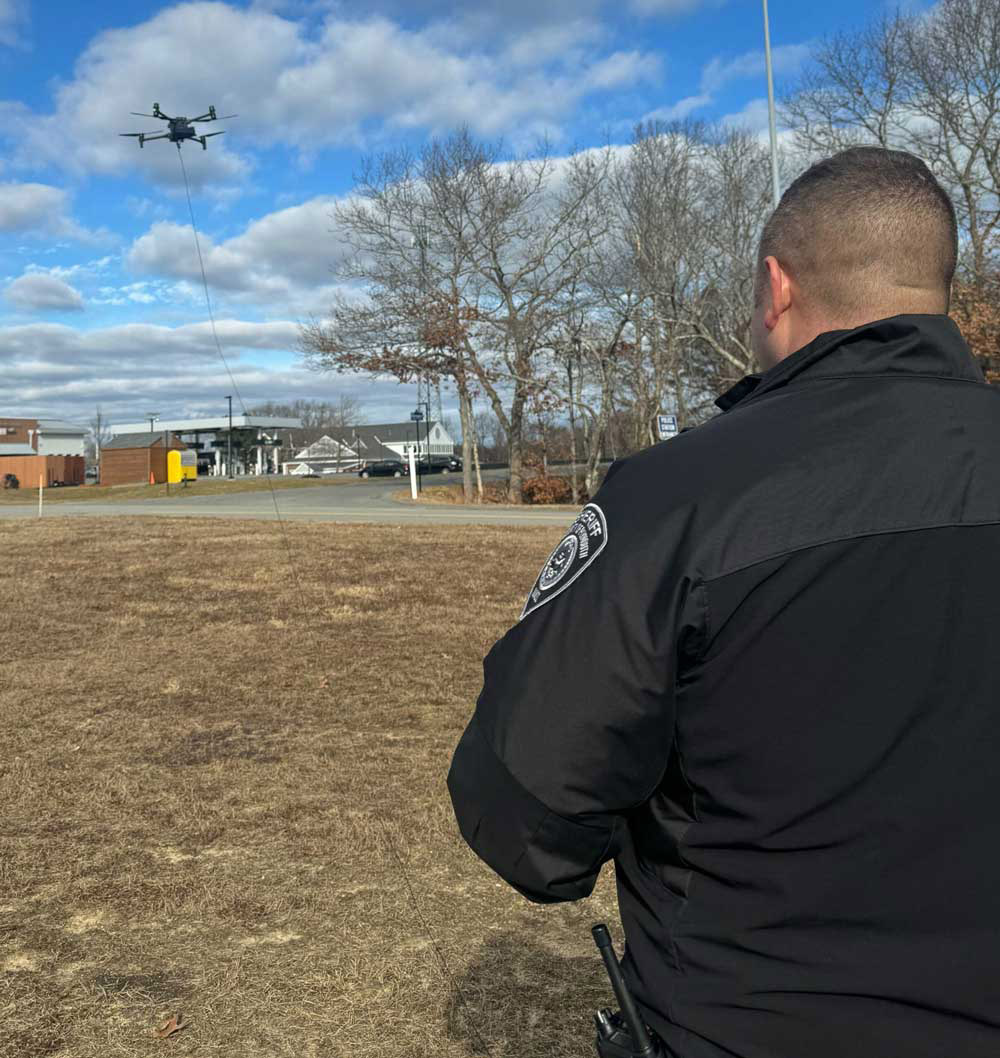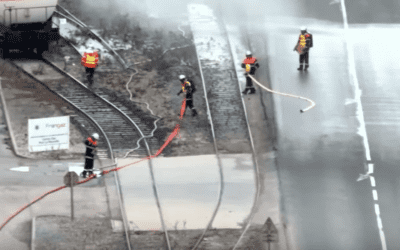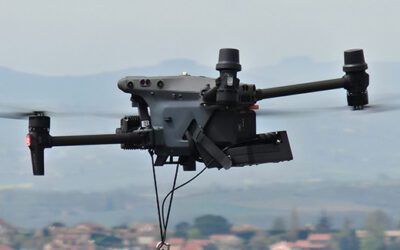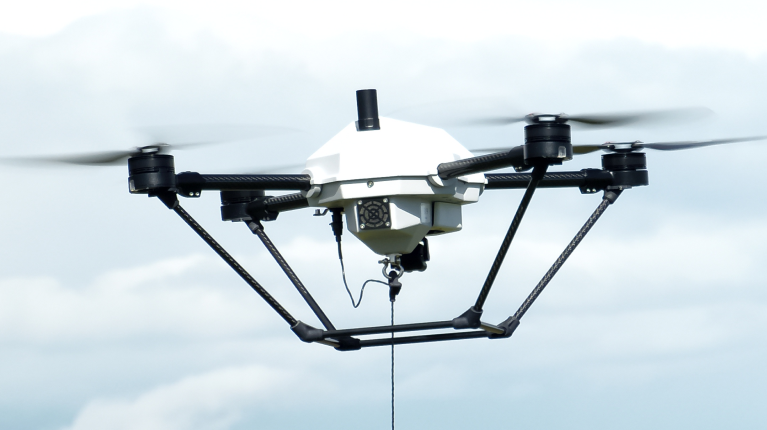Drones for law enforcement: 6 steps to organize a mission
Elistair Team
12 minutes
Drones for law enforcement have become increasingly valuable tools for public agencies worldwide. Police have been using drones for various operations such as crowd protection, search and rescue, or traffic monitoring due to their ability to provide aerial surveillance and gather evidence.
Before launching a drone mission, drone operators must carefully plan and prepare to ensure the safety of both officers and the public.
What are the benefits of using drones for law enforcement?
And what are the key steps to prepare law enforcement for a drone mission?
From selecting the appropriate equipment and understanding legal requirements, we will cover everything you need to know to execute your mission successfully and safely.
The Role of Drones in Law Enforcement Missions
The ability of drones to provide aerial surveillance and real time data has significantly enhanced the efficiency and safety of law public safety operations. Here are some of the key roles drones play in law enforcement missions:
Real-Time Aerial Surveillance for Enhanced Situational Awareness
Drones excel in providing live feeds from above, enabling officers to monitor large areas quickly and efficiently. This capability is especially valuable during critical events such as public demonstrations, search and rescue missions, and disaster response.
Cost-Effective Monitoring
Traditional methods of aerial surveillance, such as helicopters, are expensive and resource-intensive. Drones offer a cost-effective alternative, reducing operational costs while maintaining high performance and adaptability.
Their versatility and ability to provide actionable intelligence make them a cornerstone of mission success. Whether it’s routine aerial surveillance or responding to critical incidents, drones empower law enforcement to operate more effectively and safely.

Step-by-Step Guide to Organizing a Mission with Drones for Law Enforcement
1- Determining the mission objective
This is an essential step before launching a drone. The mission objective may vary depending on the operation and is key for the drone team to select the right equipment.
The more information they have about their mission, the easier it will be for them evaluate the drone’s capabilities and ensure it is the right fit for the mission.
In addition to the mission objective, here are some questions that can be asked to choose the optimal solution:
- Do I need a night vision camera or thermal images?
- Will I need a broader view of an area by using a powerful zoom?
- Do I require my drone to access difficult-to-reach areas?
- Will there be weather limitations, what’s the forecast?
- Will I need to remain airborne for a long duration?
- What are the crew size requirements that are necessary to execute the drone operation?
Depending on the answers, key specifications must be checked:
- The drone’s battery life. Operations lasting several hours may require a tether.
- The camera’s quality and range.
- Weather resistance depending on the environment.
- Consider the drone’s dimensions when planning flights in confined or difficult spaces.
- Automated flight procedure to help the flight operators focus on gathering intelligence from the screen.
2- Reviewing area specific flight regulations
Different jurisdictions have different regulations, and all drone missions must comply with applicable laws. In most cases, police operations will have simpler regulations. However, unmanned aircraft systems (UAS) are considered aviation assets and require compliance with local rules to operate safely with other aircraft and people on the ground.
In addition, using drones equipped with failsafe features will help mitigate flight risk in an urban environment. Law enforcement drone operations should include safety measures to help pilots carry out their missions safely and in accordance with local law, such as:
-
Geofence
-
Parachute
-
Suites of Failsafes
-
Return to home
3- Planning the flight path
The objective here is to ensure that the drone can successfully accomplish the mission. Here are some factors to consider:
-
What will be the maximum altitude and speed of the flight?
-
Are there any potential obstacles, to include signal interference, in the area that could impede the flight?
To create a safe plan, the operations team will first prepare their mission using the digital aeronautical charts provided by the Federal Aviation Administration. This will ensure the flight operation is being conducted legally and within approved airspace. This will also allow the operators to identify if any airspace waivers are necessary for the flight.
For the tactical consideration, it is essential to take into consideration the following:
-
Where to launch, and any site limitations?
-
How will the drone reach its target?
-
How to maintain a high level of discretion regarding the objective.
-
Where will the pilots be situated during the flight, and is it a safe location?
-
What can be a backup landing zone in a case of an emergency?
Therefore, the flight team can prepare a flight scenario that will achieve all objectives for a successful outcome.
4- Conducting a risk assessment
Performing a risk assessment is crucial before flying a law enforcement drone to ensure that potential hazards are identified, and steps are taken to mitigate them. Depending on the purpose of the flight, there are two levels of risk assessment: aeronautical authority and police unit.
-
For aeronautical authority, it is important to identify any no-fly zones, such as restricted airspace or areas near airports. Additionally, the drone must not pose a danger to people or property on the ground, which can be achieved by adhering to local regulations and ensuring proper training of the operator.
-
For police units, it is important to assess the risks associated with the mission. A risk table can be used to evaluate factors such as the urgency of the situation, the weather conditions, the location of the mission, and the experience of the pilot. It is important to consider the potential impact of stress, fatigue, and missing information on the pilot’s ability to react and adapt, which may increase the risk of failure.
In both cases, it is important to have a clear understanding of the risks and take steps to mitigate them. This can include implementing safety protocols, having backup plans in place, and ensuring that the drone is properly maintained and equipped with necessary technology.
5- Coordinate with other personnel
When using drones for law enforcement, coordination involves integrating the drone mission into the larger operation by establishing communication protocols and providing regular updates on the drone’s progress.
In many cases, it is possible to live stream the video feed into the command center, which is the best way to provide critical information to the commanding officers and help them maintain situational awareness. However, if live streaming is not possible, the drone team will need to communicate through radio communication or directly to the commanding officers.
6- Identify one or several skilled drone pilots
Flying drones for law enforcement operations requires a high level of effectiveness and awareness from the pilots. Once the drone is in the air, it is crucial to monitor its progress and make necessary adjustments to the flight plan.
This may involve changing the altitude or speed of the drone, adjusting the camera angle, using automated flying modes, automated camera patterns, and alerts that may come from the drone. The pilots will also rely on the visual information displayed inside the flight software to make informed decisions and adjustments during the flight.
To effectively utilize drones for law enforcement, careful planning and mission execution are critical. This includes identifying the mission objective, conducting a risk assessment, selecting the appropriate equipment, and maintaining communication with all team members.
For additional insights on law enforcement drone deployments by police forces, you can check out our webinars and listen to the Arlington Police Department feedback about the use of tethered drones and how they improve the overall success of their public safety missions.
For more information about Elistair and its products, please visit www.elistair.com and get the latest developments on Linkedin @elistair.









